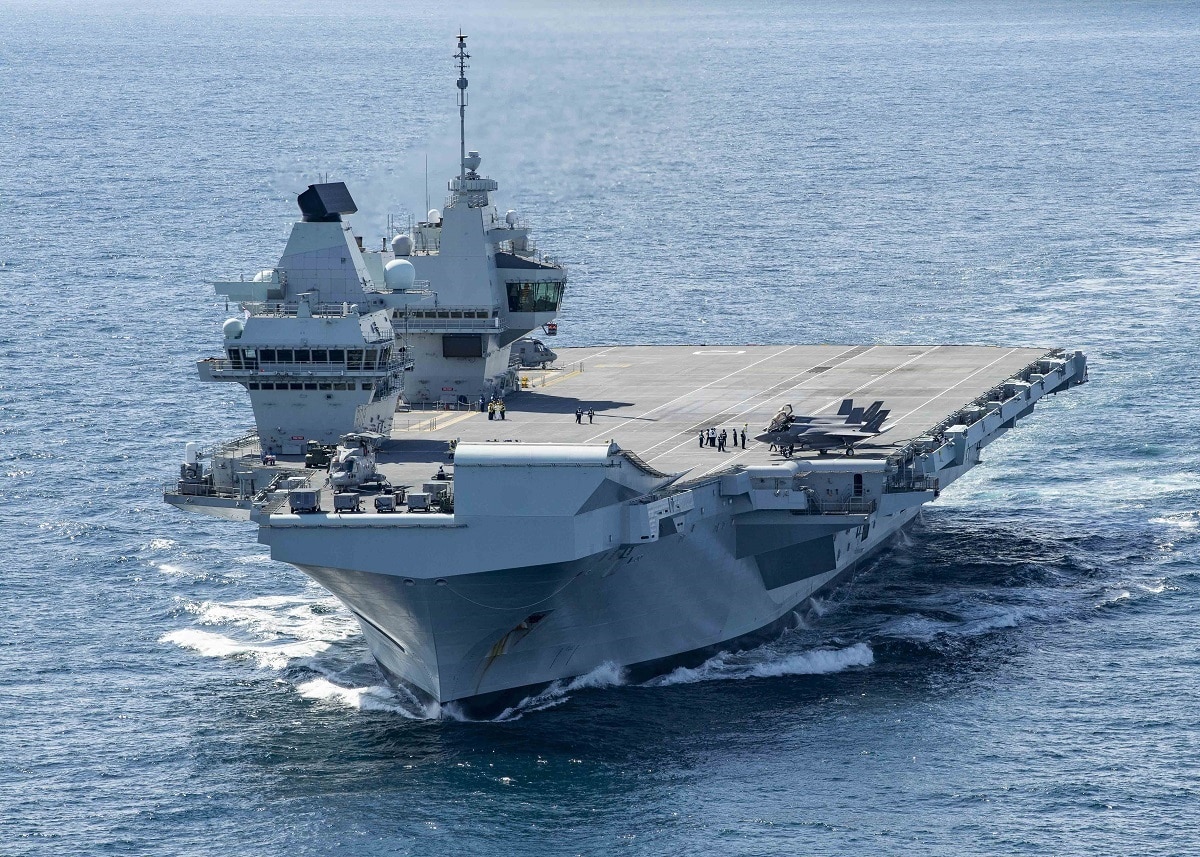The Royal Navy’s HMS Queen Elizabeth has continued her globe-trotting maiden voyage and this week entered Korean waters. The UK flagship and carrier strike group (CSG) took part in a range of exercises with the vessels from the Republic of Korea (South Korea) Navy last week.
“Maritime interoperability at its finest as the @RoyalNavy and ROK navy operate side by side conducting critical maritime manoeuvres. Thank you to the ROK Navy for their enthusiastic support to the #CSG21 deployment,” Commander of the UK Carrier Strike Group Commodore Steve Moorhouse posted on social media on Tuesday.
In a video statement, Moorehouse added, “Our current deployment of CSG21 has taken us from the Atlantic Ocean, through the Mediterranean, across the Indian Ocean and has brought us here to the western Pacific for a series of exercises and engagements with regional partners including the Republic of Korea.”
The carrier departed Portsmouth, England on May 22, and conducted a transit of the Suez Canal in July. She had most recently conducted exercises alongside U.S. and Japanese vessels that included two-day gunnery training exercise at an uninhabited tropical island in the Pacific Ocean.
Korean Exercise
The Royal Navy had to cancel a port visit to South Korea, but the UK carrier strike group (CSG21) was still able to take part in the combined naval exercise with the ROK Navy in the East Sea (Sea of Japan) near the Korean Peninsula. According to a report from Naval News, this week’s exercise focused on SAREX (Search and Rescue Exercise), and focused on humanitarian search and rescue as well as maritime replenishment and supply at sea.
“The United Kingdom, like the Republic of Korea, is an outward looking trading nation committed to contributing to the maritime security which underpins global prosperity, and by sailing here we make clear our determination to work with like-minded nations in support of an open and transparent system of international rules,” said Moorehouse. “Our aim is to strengthen the ties between our two countries and to pave the way for closer cooperation in the future.”
CSG21 was reportedly comprised of eight ships including two destroyers, two frigates, two support ships and one submarine – and that included vessels from the U.S. and Royal Netherland Navies respectively. They were joined by the ROK amphibious assault ship Dokdo. South Korea currently operates two of the Dokdo-class flat tops, and the lead ship entered service in July 2007. She is currently the flagship and largest vessel in the ROK Navy. The second of the class, ROKS Marado, was commissioned in June.
“The UK Carrier Strike Group 21 led by HMS Queen Elizabeth begins multi-dimensional exchanges with the ROK Navy in Korean territorial waters as of today. The CSG21 will closely cooperate with the Korean Navy to test interoperability and share exemplary models,” the embassy of the UK in Seoul said in a statement.
This was the first time British warships had worked alongside South Korean vessels, even though it was the third time that a British carrier had visited the nation. The light aircraft carriers HMS Invincible had made a port visit in 1992, while HMS Illustrious visited in 1997.
In addition to the closer ties that the UK is forging with South Korea, the arrival of the carrier coincided with the signing of a Memorandum of Understanding (MoU) between the UK-based shipbuilder Babcock International and Hyundai Heavy Industries. The two companies are seeking a contract with Seoul to develop and potentially build South Korea’s aircraft carrier under the CVX program.
Peter Suciu is a Michigan-based writer who has contributed to more than four dozen magazines, newspapers and websites. He regularly writes about military small arms, and is the author of several books on military headgear including A Gallery of Military Headdress, which is available on Amazon.com.

